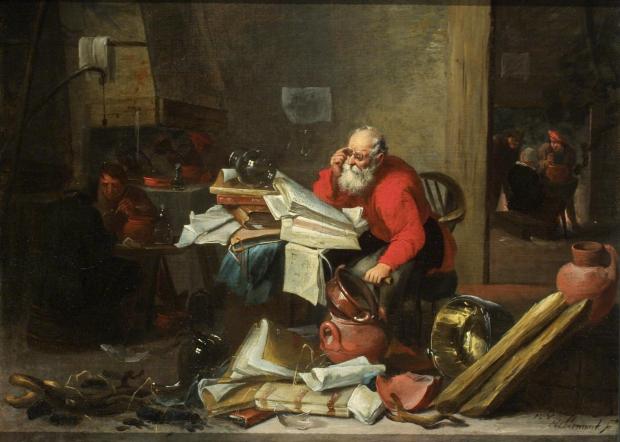 As a screenwriter, I am fascinated by how susceptible we humans are to misbelief, superstition, and myth, I am reminded (daily) that we are now firmly in the fever pitch of mass mythologization and anathematization.
As a screenwriter, I am fascinated by how susceptible we humans are to misbelief, superstition, and myth, I am reminded (daily) that we are now firmly in the fever pitch of mass mythologization and anathematization.
We’ve reached Gladwell’s Tipping Point and are through the looking glass in a dysmorphic, hyper-politicized realm of sinners and saints, demons and angels, and heaven and hell.
As with the most virulent beliefs there is an element of anosognosia to it. As Dan Dennett explains, “If some (beliefs) are culturally evolved parasites, we can expect them to be insidiously well designed to conceal their true nature from their hosts, since this is an adaptation that would further their own spread.”
In other words, one of the more insidious aspects of belief affliction is the afflicted one is typically the last one to know it. We see a lot of this today with the epidemic spread of Alzheimer’s disease and dementia.
In fact, one of the principle reasons we form identity-protecting group beliefs or ad populum congregations is to publicly reinforce the veracity of the fiction, even when it defies all logic and reason.
Is it reasonable to believe that the Supreme Creator of the Universe, presumably the greatest physicist and mathematician ever to exist, would contrive to incarnate as his own son and have himself brutally slaughtered in order to save his beloved creation from the 6,000 year-old curse of his own making?
Of course not, and yet as a world superpower in the 21st century we would be hard-pressed to elect a leader who openly questioned it.
Malcolm Gladwell describes the virulent nature of mass belief this way: “The tipping point is that magic moment when an idea, trend, or social behavior crosses a threshold, tips, and spreads like wildfire.”
In Aristotelian terms, be it Sophocles, or Mad Max: Fury Road, we gather in a confined arena (movie theater) to willfully (or perhaps autonomically) suspend disbelief and join in on the confrontational, and climactic catharsis (katharsis) to come.
According to the English poet Samuel Taylor Coleridge, in his 1817 “Biographia Literaria”: We are mandated… “to persons and characters supernatural, or at least romantic; yet so as to transfer from our inward nature a human interest and a semblance of truth sufficient to procure for these shadows of imagination that willing suspension of disbelief for the moment…”
Such is the nature of the human brain.
As, Virginia Woolf once wrote, “Love is a story we tell ourselves about someone else”.
We humans are prolific, if not, pathological storytellers, biologically destined to seek out phantoms and patterns where none exist, and make up shit about it:
We superimpose a human face on the Moon and weave a tale about an omniscient heavenly being overseeing our actions and deeds.
Of course, in our most primitive beguilements it didn’t hurt that said “White Goddess” also controlled the crops, tides and women’s menstrual cycles and spectacularly transformed into cow horns every month. (Etymologically we derive our words moon, month, menstrual, man and woman from the Sanskrit root “me”)
We see the pareidoliac image of a bearded face on a cheese sandwich and claim it to be that of Jesus– even when no physical description of Jesus is put forth from either Paul’s earliest Epistles or the Synoptic Gospels. (Apologist references to Josephus’ is widely considered a forgery of Eusebius, the Fourth Century “Father of Church History”)
So where does that leave us?
Should we continue to indulge these primitive Bronze age misbeliefs, or do we confront them?
With all the solace that religious beliefs bring, and much of the good they aspire to all over the world, what to speak of the ingenious art, music and architecture they have inspired, why not simply let them die out on their own?
Isn’t this what happened to the all the ten thousand other gods, goddesses and beliefs from antiquity?
I suspect these are questions we all need to ask whether it is our own impassioned political notions or habituated ideas about morality, creation and the meaning of existence.
As Joseph Campbell wrote in The Symbol without Meaning:
“Let us ask, therefore: What can the value or meaning be of a mythological notion which, in the light of modern science, must be said to be erroneous, philosophically false, absurd, or even formally insane? The first answer suggested will no doubt be the one that, in the course of the past century, has been offered many times by our leading thinkers. The value, namely, is to be studied rather as a function of psychology and sociology than as a refuted system of positivistic science, rather in terms of certain effects worked by the symbols on the character of the individual and the structure of society than in terms of their obvious incongruity as an image of the cosmos. Their value, in other words, is not that of science but of art: and just as art may be studied psychologically, as symbolic or symptomatic of the strains and structures of the psyche, so may the archetypes of myth, fairy tale, archaic philosophy, cosmology, and metaphysics.”